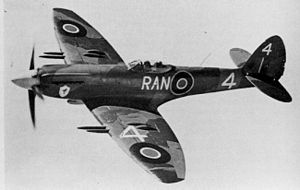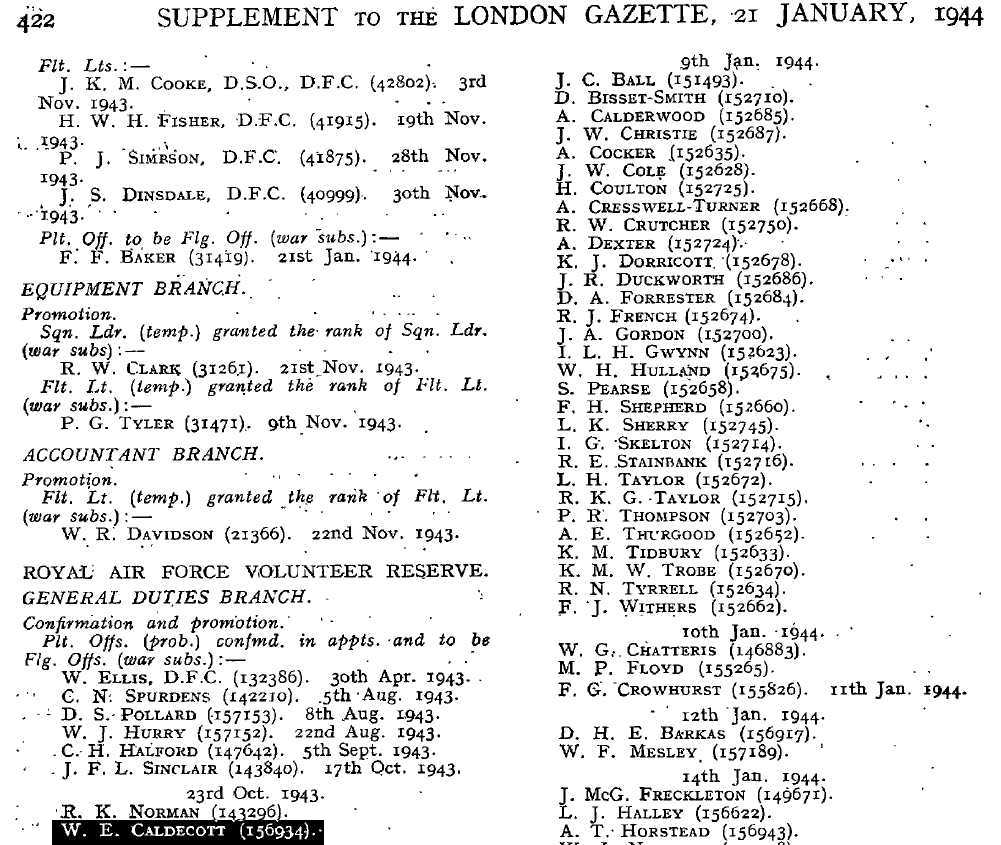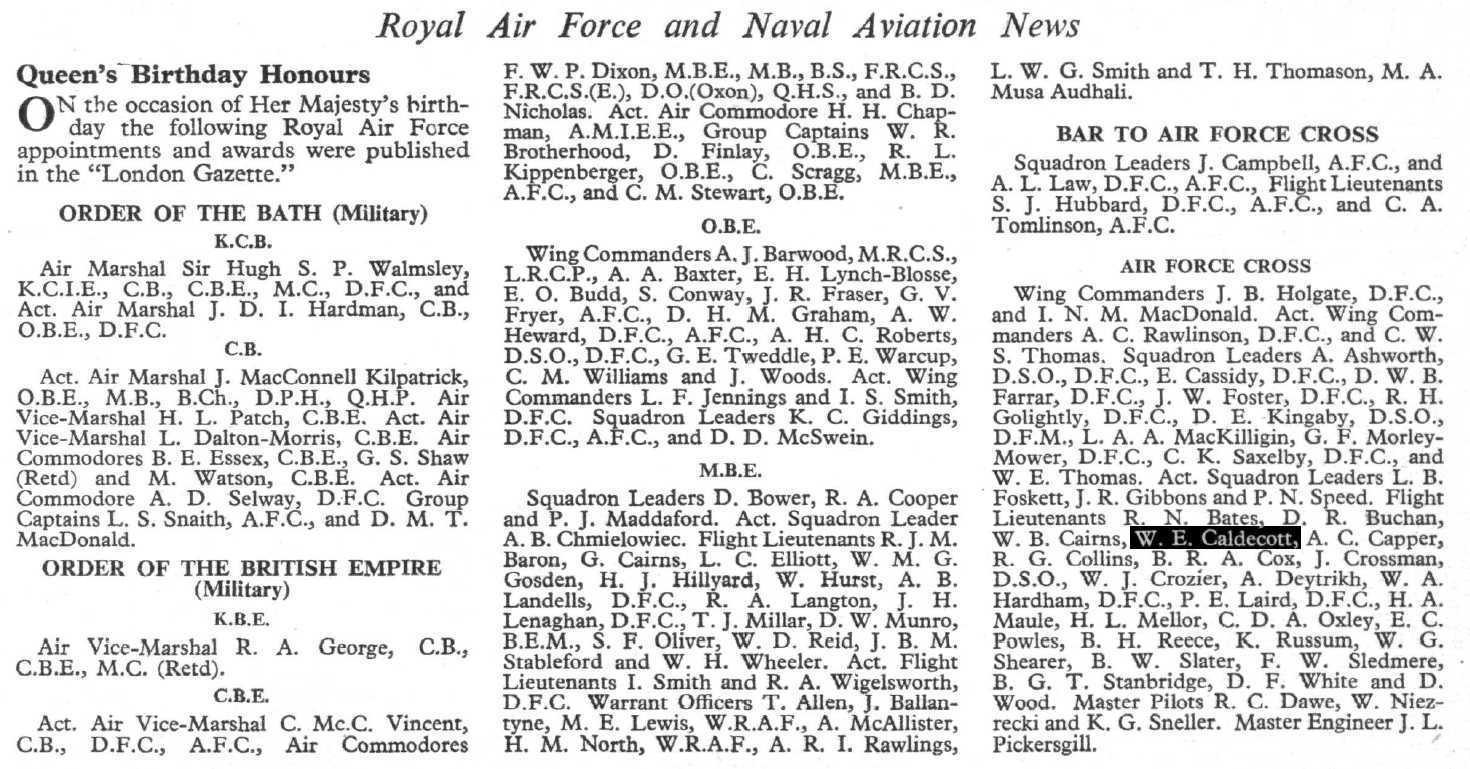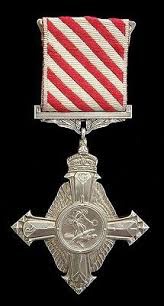

Sq/Ldr W.E.Caldecott AFC
Written and researched by David Bohl, with the kind help of historians world wide.


[1947-48]

[1949-50]
Seventy years on, Merseyside remembers the May Blitz of 1941, a seven day bombing campaign by almost 700 aircraft. They dropped nearly 900 tonnes of high explosives and well over 100,000 incendiaries. As a result over 1,700 civilians lost their lives and 4,400 houses were destroyed.
[eng.wikipedia.org]
As part of the Royal Air Force volunteer force he was Gazetted (London Gazette) in 1944 with a promotion to Flying Officer.

Taking
to the air in his Supermarine Spitfire he was officially
credited with four enemy kills by aviation history archive Ciel de
Glorie.
Flying with 81
Squadron over Cyprus he and
Flt/Lt Montgomerie downed a Focke-Wulf
58.
After the war W.E.Caldecott continued to play for Sefton at first team
level but rejoined the Air Force in 1949.
For his exploits during the war he was awarded the Air Force Cross at a
ceremony held at Buckingham Palace

In 1957 once again he was Gazetted for promotion to Squadron Leader.

On
a sad note, in
October 1958 he was badly injured co-piloting on a training flight with
Squadron Leader J.S.Lamplough out of RAF South Cerney, Gloucestershire.
He later died in the RAF hospital at Wroughton, Wiltshire.
The cause of the crash in the De Havilland Chipmunk is unknown but an
eye-witness account is recorded in Colin Cummings' excellent book
Category Five:-
7 Oct 1958 WP868 Chipmunk T10 CFS Near Bibury Gloucestershire

